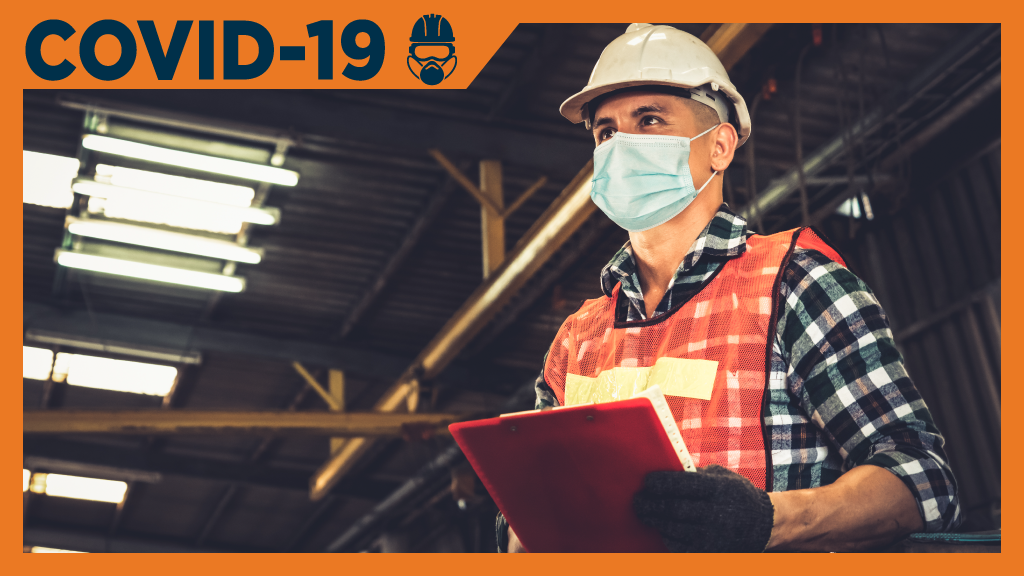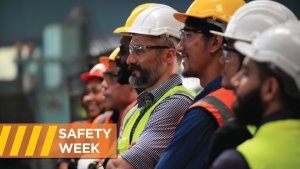When it comes to construction site safety protocols during the COVID-19 pandemic sometimes “pressure makes diamonds.”
Stewart Day, a health and safety director with Mobilinx, said the current situation presents opportunities on construction sites “in things that were always there but it forced us to refine our processes.”
He shared this view during the Ontario Road Builders’ Association’s fifth webinar on June 5 billed Occupational Health and Safety – The Next Level, where leaders shared what they are doing to keep sites safe.
In his talk on improving safety communication to crews, he discussed semantic encoding, the idea of how outcomes are hardwired in the brain.
“We all know that if you touch fire it burns and we remember that quickly as human beings, whereas other things like staying away from each other take more time to learn,” said Day. “Research suggests that these take up to 28 lessons learned before it’s actually hard wired in the brain.”
Therefore, key messages need to be reinforced, he said.
“It’s imperative that you have your workplace properly set up with hygiene, physical distancing and other types of reminders,” he explained. “We have to hit people up with key messaging but get creative with it, work with a graphic designer if you can and make sure your messages are clear and understood. Saturate your workplace with these key messages.”
The company has moved its training online, he added.
Paul Devoe, manager of regional operations north and west with the Infrastructure Health and Safety Association (IHSA), said the association has been conducting COVID-19 site consultations since the end of March to help the Ministry of Labour complete in-person inspections of essential construction services that were operational during the pandemic. The IHSA had completed 390 in person site inspections at the time of the webinar.
Health and safety should never be a matter of competition in our industry,
— John Savoia
Powell Group of Companies
“We’ve had a very good response to these voluntary site inspections,” Devoe explained. “We are not the ministry, we are not out there enforcing stop work orders. We were there simply in a support capacity to provide resources to the firms that allow us to come on site. Overall, these inspections have been overwhelmingly positive. We’ve seen some great things with regards to hygiene practices, physical distancing on sites and lots of good passive and active screening in place.”
The IHSA noticed areas that can be improved on based on the data collected from the inspections completed to date.
“I think the area for improvement noted in the training and communication section is definitely ‘does the day start with a discussion regarding controls and changes needed or challenges?’” said Devoe. “It’s great to have initial COVID interventions in place with regards to protecting employees, protecting contractors onsite, but at the same time we want to ensure that those interventions are checked regularly, to get some feedback from staff, to make sure they are still meeting the need and do they need to be changed in any way.”
The IHSA has a COVID-19 resource page for the construction, utility and transportation sectors that now includes self-help videos.
John Savoia, senior manager of health and safety at Powell Group of Companies, shared how his company is managing training and onboarding during this time.
“While we make all of these changes to adjust to the current situation, we should also adjust how we train both new and seasoned workers,” Savoia said.
“Health and safety should never be a matter of competition in our industry. If we share best practices we can help each other not only protect our employees but make the industry safer as well.”
Due to the five-person gathering restriction in the province, only four people can be trained by an instructor at a time.
“Co-ordinating with each business unit and human resources has been key to safely and successfully onboarding each new hire,” Savoia said, adding new hires are required to submit a self-screening form before they are permitted to begin training. “The first topic we get into is our own COVID-19 policies, procedures and protocols.
“Part of these protocols and procedures is that each person has to sanitize on entry and exit of the training room. At the end of each training day the room is disinfected.”
Some classes require the use of building materials, harnesses and lifelines.
“Each individual is provided with their own disinfected materials to be used for the day which are then disinfected at the end of the day and sit for five to seven days without being used again,” Savoia noted.
John Serafini, manager of health and Safety at Dufferin Construction Company, talked about how his company protects workers inside work zones.
“The purpose of an internal traffic protection plan is really about minimizing the workers on foot and separating them from work vehicles,” he said, adding the plan actually makes things run more efficiently onsite. “It’s about reducing the maneuvering and reversing of the vehicles that are inside your active work zone.”
Follow the author on Twitter @DCN_Angela.











Recent Comments
comments for this post are closed